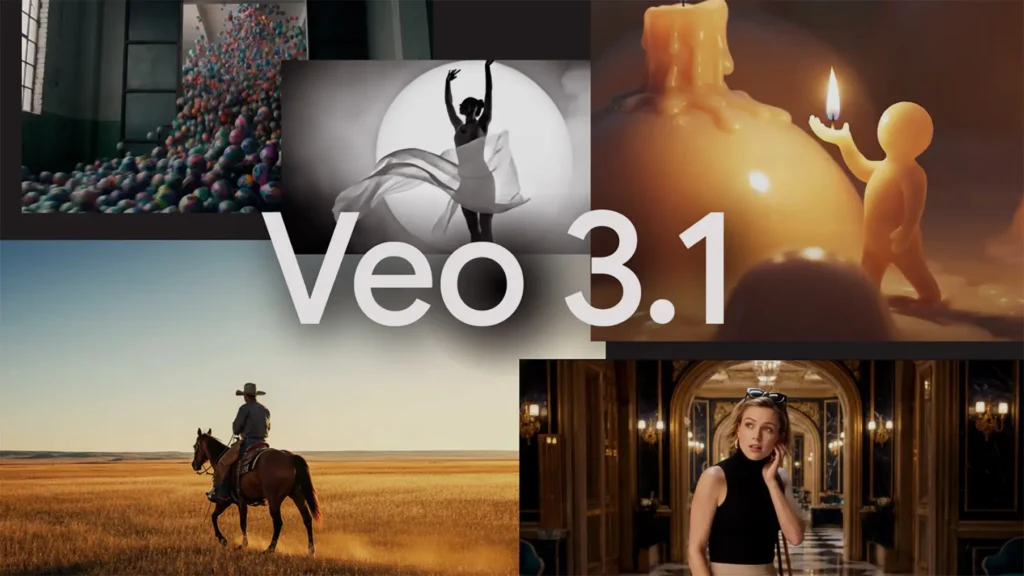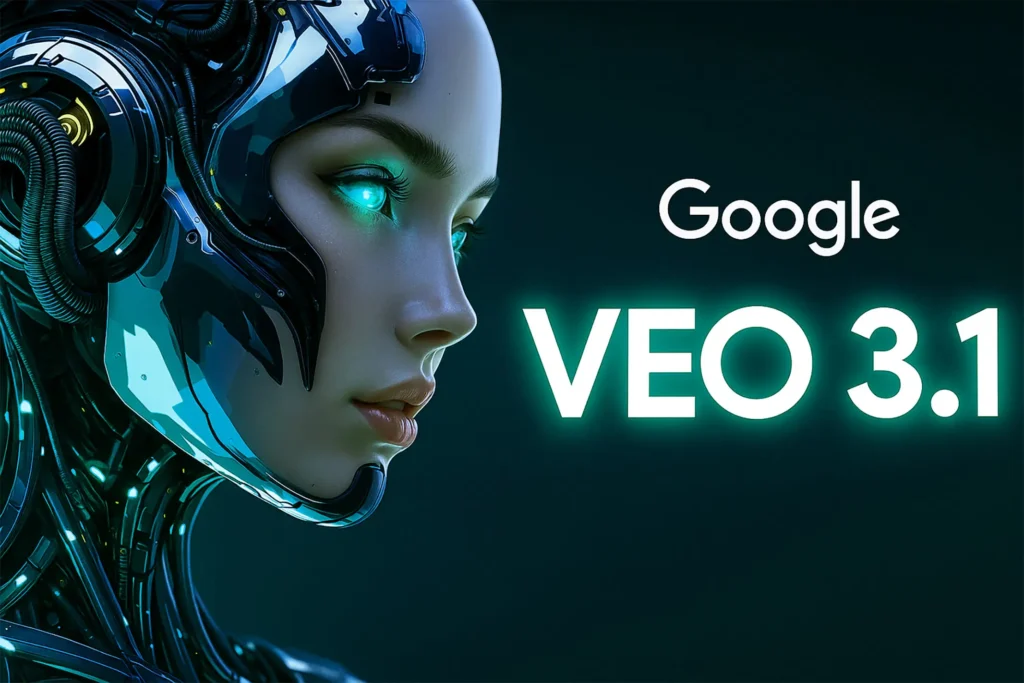In the accelerating race of generative video intelligence, Google VEO 3.1 is emerging as a formidable competitor, positioned to challenge OpenAI’s SORA 2 and reshape the future of AI-driven content creation. In this deep dive, we explore Google VEO 3.1’s architecture, features, strengths, limitations, and its broader implications for creators, platforms, and industries.
The Rise of AI Video Models: From SORA to VEO
Generative AI has long been evolving — from text and image to audio, and increasingly to full-motion video. OpenAI’s SORA 2 drew attention by producing coherent video sequences, realistic motion, and conditional prompt control. But Google, with its vast infrastructure and research base, has moved swiftly to counter with VEO 3.1, a next-gen video engine that aims to push performance, fidelity, and usability further.
While SORA 2 impresses with flexible prompt conditioning and temporal consistency, users have pointed out occasional artifacts in frame transitions, limited resolution scaling, and occasional motion anomalies. Google’s VEO 3.1 addresses these with tighter integration into its neural rendering pipelines and a set of enhancements oriented for both research and production.
Core Architecture and Innovations in VEO 3.1
Multimodal Fusion Backbone:
At the heart of VEO 3.1 lies a multimodal fusion transformer that ingests text prompts, image references, and optional style embeddings. Unlike earlier versions that treated modalities independently, VEO 3.1 merges them in a unified latent space, enabling more coherent alignment between language and visual motion.
Temporal Smoothing & Motion Consistency Layers:
One of the breakthroughs in VEO 3.1 is its temporal consistency module—a set of residual networks that enforce cross-frame continuity and motion smoothness. This helps avoid the flickering and jitter artifacts sometimes seen in earlier generative models, including SORA 2.
Hierarchical Latent Upscaling:
VEO 3.1 can natively output in 4K resolution via a multi-stage upscaling pipeline. Starting from a lower latent grid, it progressively refines spatial detail using diffusion-based superresolution modules. This hierarchical upscaling allows finer texture synthesis while controlling noise and overshoot artifacts.
Prompt Control & Conditioning:
Google offers advanced prompt controls in VEO 3.1, including:
- Style tokens (e.g., “cyberpunk”, “cinematic”, “documentary”),
- Temporal anchors (e.g., “from 0:10 to 0:20 slow motion”),
- Object persistence control (lock an object’s appearance across frames),
- Scene transitions cues (fade, wipe, crosscut).
This level of control competes head-to-head with SORA 2’s prompt capabilities, but with Google’s research layers tuned for stability and consistency.
Integration with Google Ecosystem:
Because VEO 3.1 is developed within Google’s ecosystem, it can tap into:
- Image and video embeddings from Imagen/Video models,
- Google Cloud TPU accelerators,
- YouTube dataset generalization for domain training,
- Vertex AI pipelines for deployment.
This integration gives it compelling advantages in scalability, dataset leverage, and compute optimization.
Comparing VEO 3.1 vs SORA 2: Strengths, Weaknesses, Use Cases
Strengths of VEO 3.1:
- Higher resolution output — native up to 4K with fewer artifacts.
- Temporal stability — smoother motion, lower flicker, stronger object persistence.
- Ecosystem synergy — easy deployment on Google Cloud, ties to YouTube and internal media datasets.
- Better style consistency — unified multimodal latent ensures prompt adherence.
- Scalability for creators and enterprises — from prototype to mass rendering.
Limitations & Challenges:
- Computational cost — high memory and TPU dependencies make inference expensive.
- Prompt complexity — controlling long narratives and branching storylines remains a challenge.
- Artifact edge cases — in scenes with extreme motion, fine hair, or transparent objects, minor distortions may occur.
- Dataset bias — reliance on YouTube-style video distributions may inject domain bias when generating for niche or avant-garde styles.
Where SORA 2 Still Holds Value:
- For rapidly iterating short clips where prompt simplicity is preferred.
- Lower-end use cases or research environments where reducing compute demand is crucial.
- When experimental artistic outputs — imperfections, abstractions — are desired.
Key Use Cases: Who Benefits from VEO 3.1?
Digital Creators & Studios:
Video creators, animators, and small studios can leverage VEO 3.1 to generate concept visuals, motion graphics, intros, or even full sequences as proof-of-concept — accelerating ideation cycles.
Advertising & Marketing:
Brands and agencies can use VEO 3.1 to produce high-quality video ads (15–60 seconds) with custom visuals, paint custom transitions, and simulate campaigns before going to live production.
Educational & Training Content:
Instructional videos, animated tutorials, and simulated demos benefit from AI-generated scenes: suitably controlled, repeatable, and scalable.
Entertainment & Cinematic Prototyping:
Film previsualization, storyboarding with motion, and concept trailers can be white-boxed via VEO 3.1 before full production.
Enterprise & Simulation:
Industries like architecture, real estate, or manufacturing can simulate walkthroughs, product demos, or environment visualizations dynamically.
Best Practices for Prompting VEO 3.1
To obtain optimal output, consider:
- Use layered prompts: start with a coarse scene description, then refine with style, motion, and anchor settings.
- Include reference imagery: feed sample images or keyframe sketches for consistency.
- Anchor critical frames: for complex scenes, lock certain pose or object frames to reduce drift.
- Iterate in drafts: generate preview samples at moderate resolution, then upscale with tuning.
- Post-process blending: minor artifact corrections in video editors (e.g., blend overlays, color matching) help polish the final output.
Implications for the Industry & Future Outlook

Democratization of Video Production:
VEO 3.1 lowers the barrier to crafting cinematic visuals. Independent creators and smaller studios can access production-level video generation before needing traditional cameras or large crews.
New Creative Paradigms:
The rise of AI video encourages prompt-centric storytelling, where narrative flows evolve from prompt sequences rather than rigid script grids. We may see new hybrid authoring tools combining AI generation and human curation.
Disruption in Stock & Royalty Media:
With models like VEO 3.1 producing tailored video content on demand, traditional stock video marketplaces may face competition — creators will demand flexible, on-the-fly content rather than fixed libraries.
Ethics, Deepfakes & Verification:
As AI video becomes more powerful, concerns around deepfake misuse, copyright infringement, and authenticity grow. Watermarking, provenance metadata, and trusted verification systems must evolve in parallel.
Next Evolutions: VEO 4.0 and Beyond:
We anticipate:
- Longer duration generation with coherent narrative structure.
- Audio-visual alignment (dialogue, lip sync, background score).
- Interactive video generative agents adjust scenes on the fly based on user input.
- Cross-modal continuity across episodes ensures world consistency over the series.
Conclusion: VEO 3.1 as a Game Changer
Google VEO 3.1 stands as a formidable contender in the generative video arena. It counters SORA 2 with improvements in resolution quality, temporal stability, prompt control, and infrastructure integration. While challenges remain in computational cost and handling edge cases, VEO 3.1 is a pivotal milestone in bringing AI-driven video creation into broader adoption.
As creators, studios, marketers, and enterprises begin experimenting at scale, the stakes for innovation, ethics, and deployment will only intensify. But one thing is clear: the future of video is not purely mechanical — it will be collaborative, prompt-driven, and powered by models like VEO 3.1.

